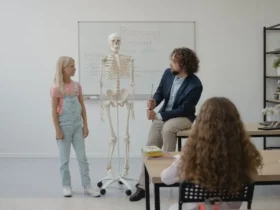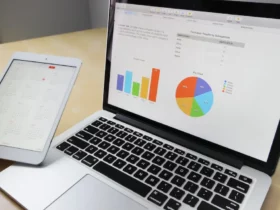For most institutions, online school wasn’t an option for learning.
However, with Covid-19, online learning became a regular practice and the safest way to continue school without exposing students’ and teachers’ health.
Now that the pandemic is over in most countries, schools reopened and, in some cases, even stopped asking students to wear a mask.
But what about online learning? Was it just a way to adapt to the crisis that people abandon now?
The answer is no.
If anything, online learning was a successful experiment, for the most part.
It has opened the door to distance learning which can be helpful for students that live away from their institutions, who have issues with mobility, or those who have health issues (temporary or chronic).
So, it seems like online school is here to stay, one way or another. But how will it impact the way students learn?
Let’s find out.
A Practical Way To Learn
As briefly mentioned, online courses open the door to remote learning. Not everyone can show up to class every day and on time.
Many students live away from universities, which means that commuting to class takes a long time, is tiring, and sometimes it’s impossible.
For instance, someone who takes a two-hour bus to university and has the first possible ride at 7 a.m. can’t get there in time for the 8 a.m. class.
On the other hand, some students have jobs, so they can’t always be present. Moreover, commuting to class can be stressful and tiring after a shift.
It’s much better to get home, have a shower maybe, and take notes in peace on the sofa while listening to the teacher explain.
For example, a student who works from home for magazines, thesis writing services, or a freelancing company can stay at home instead of commuting.
Alternatively, listening to the recorded lesson can help students who have trouble following an explanation or with a tight schedule.
So, for all these reasons, online learning has been revealed to be a handy and inclusive tool for learning.
In the next decade, remote courses are bound to become more popular and further more inclusive.
Maybe even online tests will become widespread and safely organized to prevent cheating.
In addition, there might be some innovative technology on its way to create a more immersive experience for those who can’t physically attend classes.
Lastly, institutions can help students who don’t have the necessary devices to attend remotely yet can’t commute daily.
A Broader Range Of Courses
Because of transportation and traditional mandatory attendance, many students would only pick one course to follow.
With online learning, this changed.
During or after the pandemic, a considerable amount of students picked extra courses to complete online.
The excellent accessibility gave students the fantastic possibility of following multiple courses and getting the best of their college years.
For instance, short but beneficial courses for developing soft skills and programming prepare students for the work market by giving them crucial working skills.
Students access live and recorded lessons from their homes, take notes and save a lot of energy, time, and money by cutting transportation.
But there’s more. Remote lessons allow you to follow courses far away from you, possibly from a university across your state. This further broadens your education options.
Also, remote learning can help people participate in conferences, seminaries, and workshops.
Technologically Adaptable Generation
The pandemic pushed people to learn more about how technology works. All generations started to use platforms they had never heard of and adapted to the new ways. This taught students flexibility, a vital skill to have in life.
Also, older generations, still very much stuck to pen and paper, have tried to adapt to the new apps and ways to teach, share, and work online.
But this amazing opening towards technology stimulated the IT business to create more intelligent, functional, and accessible apps and devices. The importance of a user-friendly interface is now a clear objective for the IT world.
This technological experience gave students a taste of a possible way to work in the future. Since remote work is more and more popular among businesses, tomorrow’s generation might work at least part-time from home.
Nevertheless, working from home means knowing how to use your virtual tools properly to send files, communicate with colleagues, and solve minor issues that might arise. So, online courses simulate that quite well.
More Pleasurable Learning
Younger people grew up with computers, tablets, and phones. So, they feel comfortable with high-tech devices.
Therefore, integrating learning into the virtual experience might help students become more motivated and excited to attend classes.
Joining class remotely might help them manage themselves and their time better.
For instance, there would be no need to ask the teacher if they can go to the bathroom because they can take the phone with them wherever.
The same goes for food and water.
Also, they can start working out as soon as the class is over, without having to collect their notebooks and pens.
Or they can start listening to the teacher while they arrive home from practice. This saves a lot of time and makes room for many activities.
Moreover, with the new teaching methods, students might learn better. Not everyone is good at learning from books or taking notes.
Some students are visual learners or have issues with understanding concepts.
Online learning and recorded lessons can help them switch methods, take better notes, and study directly in class.
Because of the myriad of apps that teachers started to use during the pandemic, the learning experience is more interactive, efficient, modern, and enjoyable.
Lastly, the sources multiply.
The webinars, videos, slides, apps, PDFs, Word files, live and recorded lessons, and books create a pool of different sources that helps students deepen their knowledge.
International Learning And Global Citizens
Traditionally, traveling and learning were two separate options for students. They had to choose between attending classes or taking a sabbatical year to travel. Fortunately, students can do both with the popularization of remote working and learning.
Especially when you’re young, seeing how other people live in other countries can help you change your point of view and find your purpose in life.
Also, you can attend classes from universities across your state and in other states from the other side of the planet.
This could mean that soon enough there will be an international academic standard that can help you have a valid degree anywhere in the world.
There are some ways to do that already, but it’s developing more and more, becoming increasingly accessible.
Last but not least, connecting with people all over the world makes your life and learning experience more pleasurable and helps erase cultural boundaries while boosting inclusivity.
In the long run, people will work together more easily, regardless of their cultural background, in equality and friendship.
Conclusion
Online learning has proved to be a useful teaching method that helps students participate in lessons even when not physically in the classroom.
Remote working is getting more popular as online school stimulates students to get used to it and adapt to new technologies.
Moreover, this new way to learn helps people with commuting, tight schedules, or people who want to travel and pursue an education.













